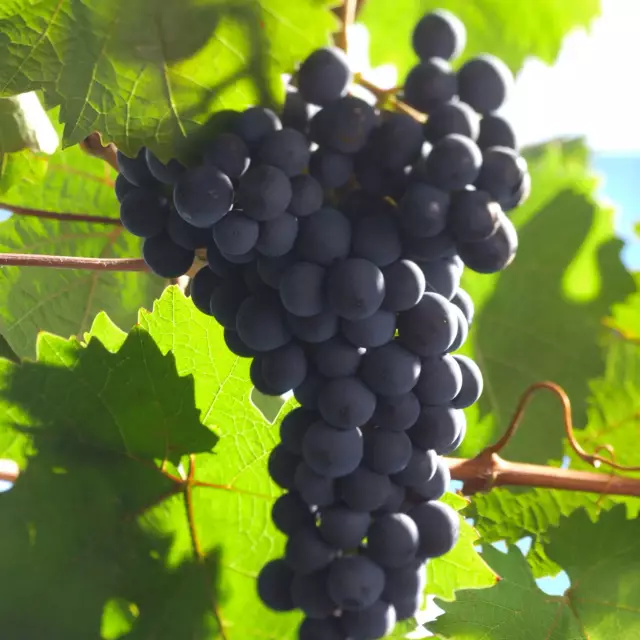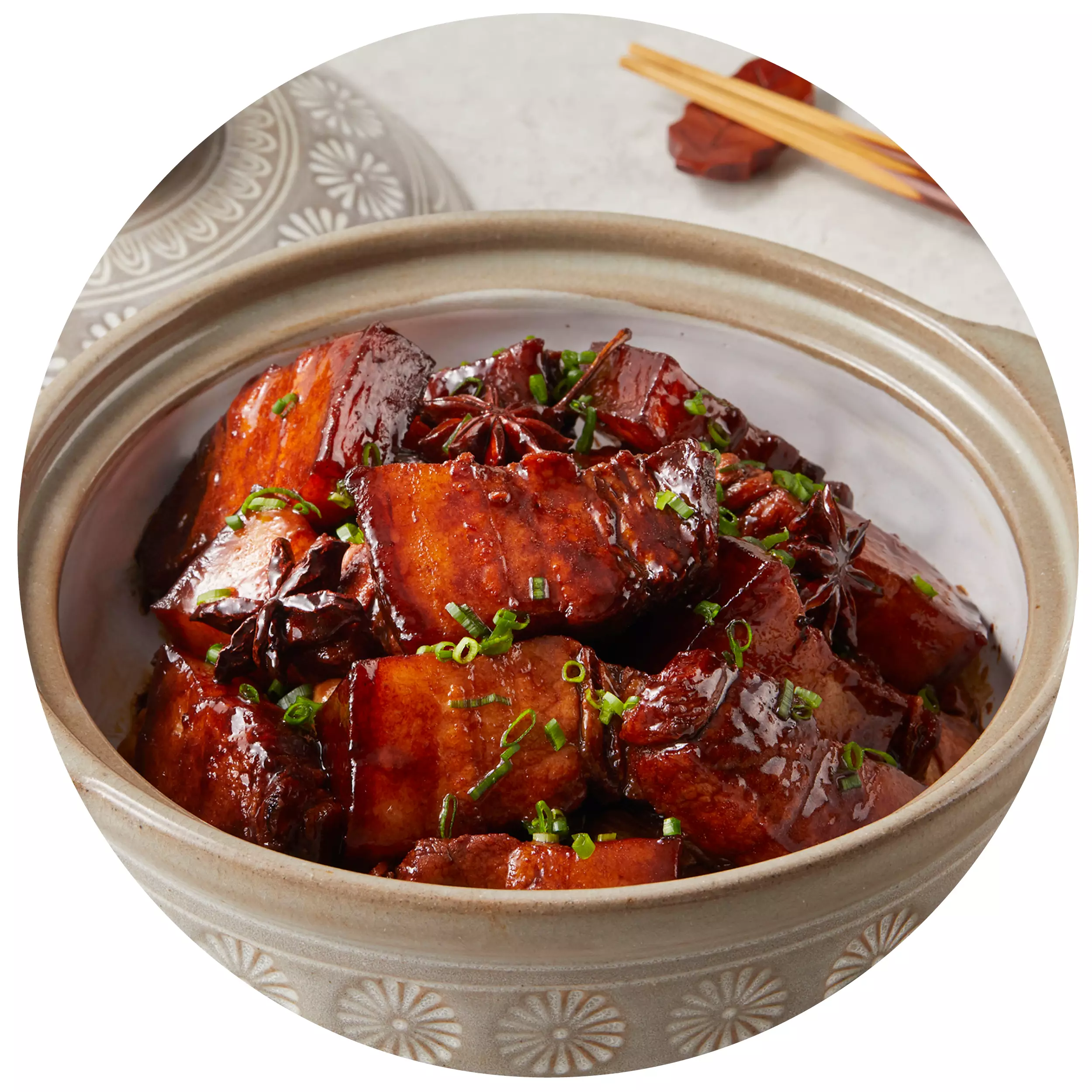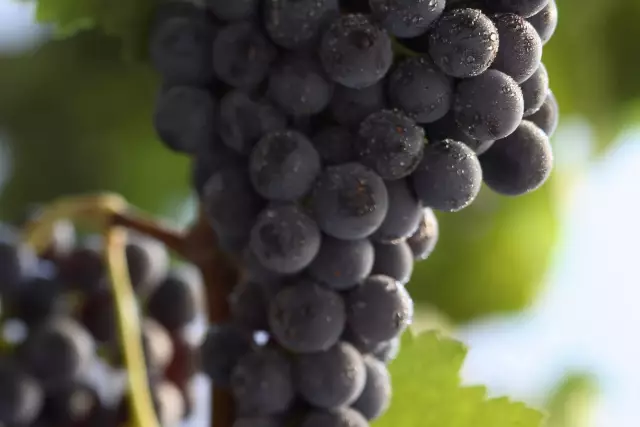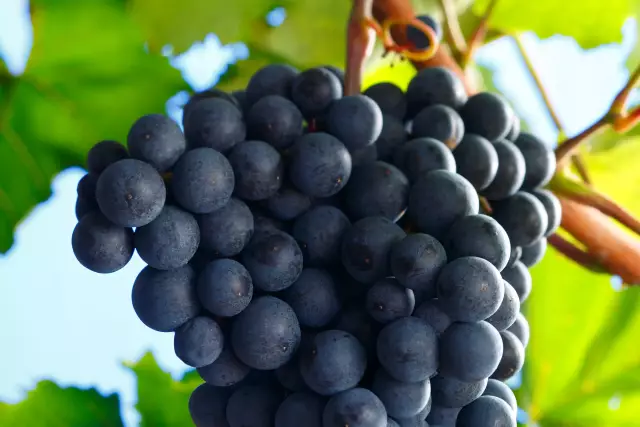Dornfelder

The new variety from 1955, which was initially used for blending with light red wines as "Deckrotwein", has long been appreciated as a German red wine classic.
Facts
-
6,618 ha
Vinyard area 2023
-
3.021 ha
Vinyard area in Rheinhessen 2023
-
2, 454 ha
Vinyard area Pfalz 2023
Cultivation and significance
The new variety from 1955, which was initially used for blending with light-coloured red wines as a "covering red wine", has long been valued as a German red wine classic. From 124 hectares in 1979, the vineyard area planted with Dornfelder grew to 6,618 hectares in 2023, which is around 7 per cent of the total vineyard area. The grape variety is most widespread in Rheinhessen with 3,021 hectares and in the Palatinate with 2,454 hectares, but the variety is also present in most other growing regions.
It is a robust, less susceptible grape variety. If given free rein, it tends to produce high yields. For this reason, many winegrowers cut off some grapes at the beginning of the ripening period in order to reduce the yield and thus support the concentration of the ingredients in the remaining grapes. The grapes grow with loose berries and are therefore less susceptible to rot. The vine makes higher demands on the soil; it is not happy with sandy or stony sites. It is also not suitable for sites that are too susceptible to frost.
Vinification and flavour
The variety is mainly vinified as a dry red wine, sometimes also semi-dry. There are two different styles. The first emphasises the intense fruit aromas such as sour cherry, blackberry and elderberry and is brought to market young. In some cases, the new vintage can already be bought as a primeur. Other winegrowers mature the Dornfelder in large or small wooden barrels (barriques), emphasising the tannins and structure of the wine and toning down the fruit aromas. These are usually full-bodied, smooth and harmonious wines. Dornfelder is easily recognisable by its deep dark colour. It is rare to find Dornfelder sparkling wines or a rosé wine made from Dornfelder.
The deep red-coloured Dornfelder red wines are ideal for the cool season and go well with hearty roasts, game or cheese. Fruity versions from the last harvest are also a pleasure to drink, even slightly chilled in summer.
History
Dornfelder is the most successful new German red wine variety. Its origins can be traced back to the town of Weinsberg in Württemberg. It was there that the viticulturalist Imanuel Dornfeld initiated the founding of the local viticultural school. August Herold - who lived there from 1902 to 1973 - bred the Dornfelder there in 1955. He crossed the varieties Helfensteiner (a cross between Frühburgunder and Trollinger) and Heroldrebe (a cross between Portugieser and Limberger). It took a few years for the variety to establish itself among winegrowers. Initially, it was used as a "covering red wine" for blending with light red wines to give them a darker colour.
At a glance
- Newly bred in 1955 from the Helfensteiner x Heroldrebe varieties
- Robust, less susceptible variety with high yields
- Second most important red wine variety in Germany Susceptible variety with high yields
- Aroma: sour cherry, blackberry and elderberry
- Flavour: tannic, full-bodied, smooth, harmonious
In which country besides Germany are there still Dornfelder areas?
The Dornfelder is actually of no significance for viticulture outside Germany. Only in Switzerland are there about 21 hectares of Dornfelder vines, as of 2018.
Tips from the Japanese kitchen JAPAN : Pork braised in soya
German wines have a natural advantage when it comes to harmonising perfectly with selected Asian dishes. With a lighter alcohol content, sometimes crisp acidity, moderate residual sweetness or soft tannins in red grape varieties, they go perfectly with a variety of styles of Asian cuisine.
- 1 kg Pork belly
- 120 ml German white wine
- 80 ml Soy sauce
- 80 ml Honey
- 50 ml Water
- 4 cm Leek (green part)
- 3 Ginger (thin slices)
- 4 Boiled eggs
- 1 Vegetables such as Chinese cabbage
PREPARATION
1. cut the pork belly into large pieces so that it fits into your pan
.
Sear and brown the pork belly in the pan over a high heat, then transfer to a saucepan. Cover the meat completely with water.
<p
<p>Add the ginger and leek and bring to the boil over a high heat.
2. reduce the heat and cook for about 1.5 hours until the meat is tender (test with a fork). Replace the evaporated water with new water and continue cooking if necessary.
<p
<p>3. Leave to cool, remove the meat and cut into approx. 4-5 cm pieces (the better the meat is cooled, the less it will dry out)
.
4 Place the meat and all the other ingredients except the soy sauce in a clean pan and heat until it boils. Reduce the heat, leave to simmer for a further 5 minutes, then add the soy sauce.
<p
<p>5 Place a plate that fits snugly into the pan directly on top of the meat or place the lid on the pan. Leave to simmer for 30 minutes.
<p
<p>6. Remove the pork from the pan, add the boiled eggs and green vegetables and reduce the stock by half.
Add the meat back in and mix well with the stock. Then arrange the meat on the plate, add the boiled egg and vegetables and pour in the stock.
<p- Lemberger (trocken)
- Dornfelder (trocken)
- Spätburgunder / Pinot Noir (trocken)
- Lemberger (halbtrocken & feinherb)
- Dornfelder (halbtrocken & feinherb)
- Spätburgunder / Pinot Noir (halbtrocken & feinherb)





